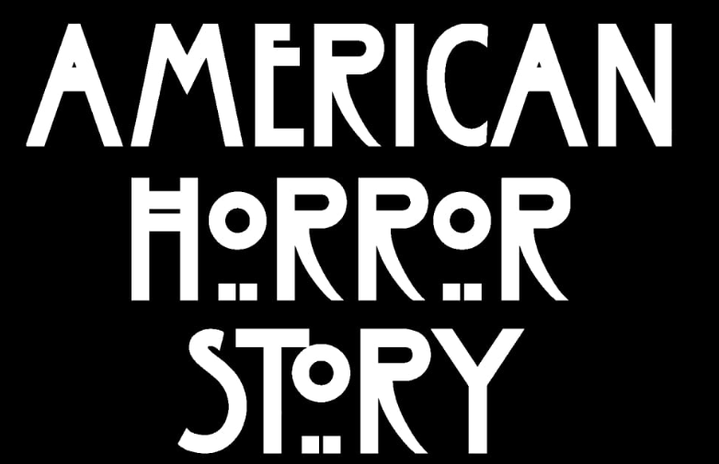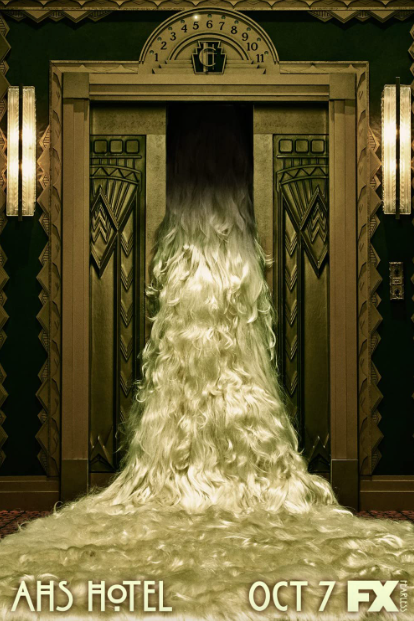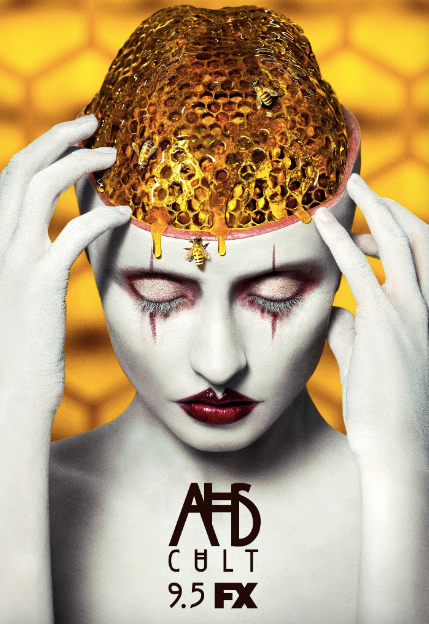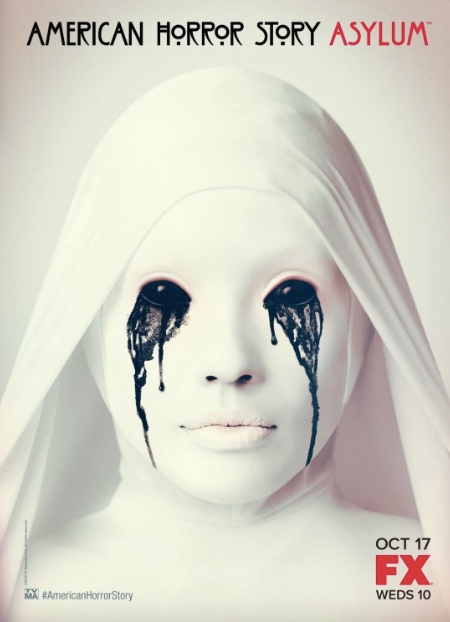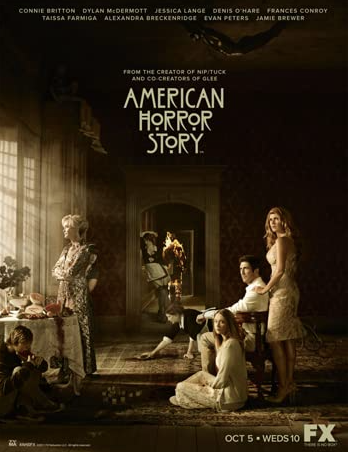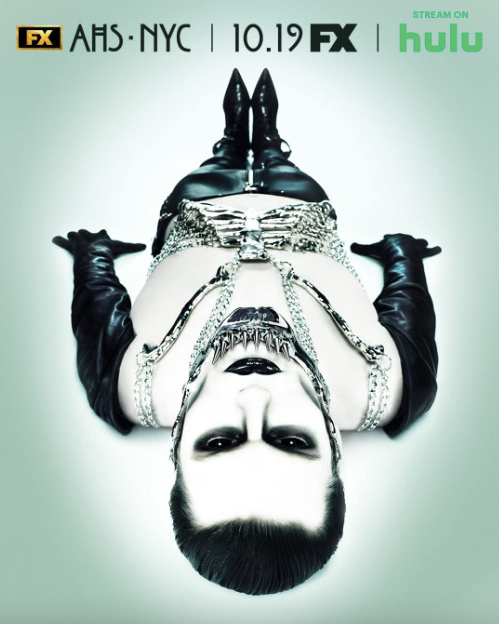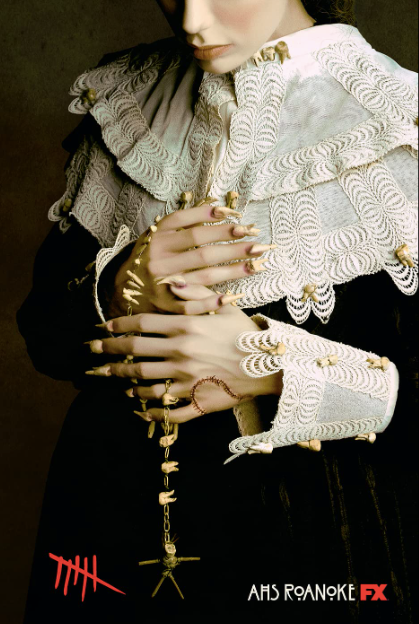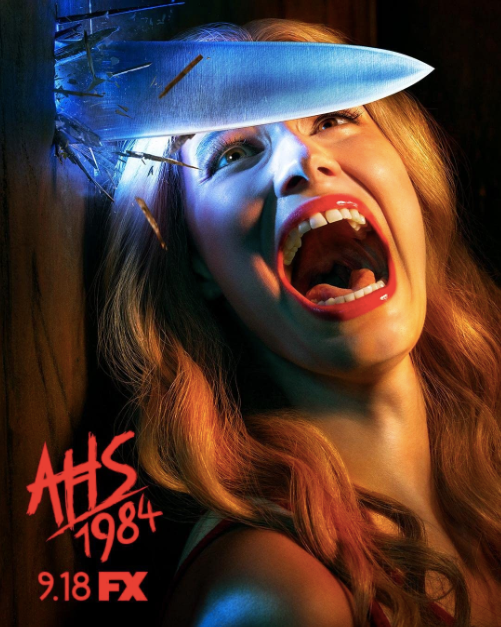The one thing that sets American Horror Story apart from other television shows is that each season has its own plotline. While there are connections between each season, they are entirely based on different storylines completely separate from each other. It makes each new season exciting to watch, drawing in viewers to see what creators Ryan Murphy and Brad Falchuk curated.
With the twelfth season of American Horror Story in its filming process, I decided to look back on my favorite show and rank all of the released seasons. My rankings are based on three aspects: storytelling & plot, characters, and complexity.
*Spoiler Warning*
- Season 5: Hotel
-
Though in my personal bias, Hotel is my favorite season, the complexity of this season outweighs the rest by a large margin.
The hotel is inspired by the Cecil Hotel in Los Angeles, infamous for the death and violence that occurred in the hotel. The Hotel Cortez is the main setting of this season, which houses a number of characters who are stuck in the hotel because they died on the property. Characters who also stay at the hotel are the Countess, who is played by Lady Gaga, Iris, Donovan, and Liz Taylor. Each of these characters has their own separate storyline. For example, the Countess, a vampire, seeks out perfect children to brainwash, turn into vampires, and mother for herself. Each character’s plotline is interwoven with others, and they are all given the limelight they need for viewers to fully understand each character and their backstory. Even though separate plotlines occur at the same time, the season is easy to follow, even when the big reveal surfaces at the end.
The main plotline revolves around a Ten Commandments Killer. Homicide detective, John Lowe, is put on a case where the serial killer is murdering those who break one of the Ten Commandments. Lowe suffers from split personality disorder and frequents the Hotel Cortez, which because of its supernatural entity, wipes Lowe’s memory of ever visiting. As the season progresses, Lowe struggles with keeping his family intact after his son goes missing (the Countess is the one who abducted his son) and struggles to find the person responsible for these killings. With spending more time at the hotel, it is revealed to Lowe that he is the serial killer he has been chasing after all along. His second persona is the Ten Commandments Killer.
With that said, this season was definitely not the easiest to follow, however, it is the most relieving in terms of understanding at the end. Watching it, I wanted more information, and the season kept me entertained the whole way. Bouncing between storylines and piecing things together put this season in the top slot.
Storytelling & Plot: 9/10
Characters: 9/10
Complexity: 10/10
- Season 7: Cult
-
Cult is inspired by the 2016 election, and the season starts with the announcement that Donald Trump was elected President of the United States. The season is motivated by the political turmoil that overtook and split the United States in 2016. However, the cult that is featured in the season is based on being power-hungry, manipulative, and violent. There are themes of betrayal with many of the characters, including Ally Mayfield-Richards’ wife, who is part of the cult and plays into her paranoia. The serial killer clown cult driven by political mania and tension paired with mental-emotional manipulation and mental health issues curated a perfectly creepy and intense season.
Cult is a very easy season to follow; however, because the cult is the only main driving point that has its own shock values, the season lacks a little complexity but not to a severe degree.
Storytelling & Plot: 9/10
Characters: 9/10
Complexity: 8/10
Though not the most complex season in terms of multiple background plot lines happening simultaneously, the depth of the cult’s formation and the shock value of the cult bumps up the complexity points.
- Season 2: Asylum
-
Asylum is set in 1964 at the fictional Briarcliff Manor, a mental institution for the criminally insane run by the Catholic Church. Off the bat, from that description, there are so many elements of this season to be unpacked. The shock value of this season was on point, and since it was the second season of the series, the big reveal of who the murderer, Bloody Face, was captured in the audience. There is a commentary on repressive Catholicism, Nazis, and mistreatment of mentally handicapped individuals, same-sex couples, and interracial couples that all get addressed in the season. For a 13-episode season, handling these concepts in a well-thought-out manner while also pursuing the main Bloody Face plot is impressive.
My one issue with this season is the lack of an alien explanation. At the start of the season, Kit Walker and his wife are abducted, then the timeline jumps to when Walker is admitted to the institution after being framed as Bloody Face. The aliens make a reappearance when Grace Bertrand is abducted. This plot, though, is never fully developed to the point of understanding.
Storytelling & Plot: 8/10
Characters: 9/10
Complexity: 9/10
Though Asylum and Cult roughly have the same ratings, I had to put Asylum in the third slot because of the unanswered/ignored alien plot line.
- Season 3: Coven
-
Coven had a fantastic and well-thought-out storyline that was easy to follow. It was based in New Orleans, and the characters were all witches of some kind, each with their own special power. The storyline took turns based on which character the episode focused most on, and the background of each character was clear. With different subplots all fitting together, Coven was a very organized season, to say the least.
Because it was such an organized season, though, the complexity dipped at some points, and many of the characters did not reach their full potential, especially if they were more recurring side characters than major ones.
Storytelling & Plot: 9/10
Characters: 8/10
Complexity: 8/10
- Season 1: Murder House
-
Murder House is certainly the most nostalgic, given it is the first season, and fans will often say it is their favorite season because of that. While Murder House is definitely a strong season, especially as an opening to the whole show, there is only one major complex entity to the season. That is, if a character dies in the house, they stay in the house forever. There are also very strong characters in the season, including deceased-school shooter Tate Langdon, deceased maid Moira O’Hara who switches between an old lady for women who speak to her and a sexual-fantasy entity for men who speak to her, and Violet Harmon, who struggles with depression and is Langdon’s love interest up until her death and eternity in the house.
Storytelling & Plot: 8/10
Characters: 8/10
Complexity: 7/10
- Season 11: NYC
-
NYC is the recent installment of the American Horror Story world based on the HIV/AIDS epidemic and a serial killer targeting gay men. The metaphor of infected deer continued to play a role throughout the season and tied in the epidemic nicely, providing the audience with insight as to what was going on. There was well-written dramatic irony. The two main plots, the epidemic and the serial killer, also received their own limelight. Rather than going from one to the next, both were happening simultaneously and after the serial killer plot ended, it was obvious to viewers that AIDS became the focal point.
The plot was definitely good in this season. However, there were times when characters’ relationships with each other were confusing or too hard to understand off the bat. The character, Big Daddy, was also a very confusing character/entity that only a few people understood by the end of the season. While things were wrapped up nicely, they could have had a better explanation of the Big Daddy character.
Storytelling & Plot: 7/10
Characters: 7/10
Complexity: 8/10
For a show that has started to lose its touch with the audience, with many fans saying the show is not what it used to be, this season definitely helped the show bounce back. The intricacy from earlier seasons surfaced again with NYC.
- Season 6: Roanoke
-
Roanoke is based on the historic Roanoke colony, and the season is presented in a documentary-form. In the season, characters who lived in a house on the colony are describing their violent and mysterious experiences while “actors” (other characters in the season) are acting out the scenes. The concept is one that takes a little to get used to, but it was definitely a new format to the season that I enjoyed. However, after the first 5 episodes, the format switched. The season put away the documentary format and went back into the present.
From there, the plot fell apart and the characters (both the “actors” and those who lived in the house) could not be developed beyond the surface. It was a hard transition and the season was both confusing and unsatisfying by the end. While I enjoyed some of the subplots and the documentary concept, the season was “meh” at best.
Storytelling & Plot: 6/10
Characters: 7/10
Complexity: 8/10
- Season 4: Freak Show
-
Freak Show is either a hit or miss for fans. At first watch, this season was certainly a miss and took me the longest to watch all the way through. On the second watch, though, I grew more of a love for the season. The characters were all unique, and all of their backgrounds and storylines mattered in the season. It was the absurdity that kept this season alive. Featuring murderers like Twisty the Clown and psychopath Dandy Mott, the horror aspect of the show was brought to life.
On the complexity scale, though, the plot’s only depth was with the side characters. It was a very easy season to follow, however, compared to the complexity of the other seasons, this one fell a little short.
Storytelling & Plot: 6/10
Characters: 6/10
Complexity: 4/10
- Season 9: 1984
-
1984 was definitely a well-developed season that was easy to follow. However, compared to the other American Horror Story seasons, 1984 fell short. The 80’s music was definitely a plus to the season, however, a lot of the side characters were simply there to be victims. Since the show is usually good at combining character’s storylines in some way and making sure each major side character was well-developed, this season was a little disappointing. The only side story that seemed to be woven into the season was the Night Stalker serial killer.
There was a nice, shocking turn at the end when the audience found out the camp counselor was the infamous murderer and not the janitor who was framed. However, this shock value did not live up to previous seasons. I also felt like the ending was thrown together rather than methodically planned out.
Since the season was organized, easy to follow, had decent characters, and had good jumps between the past for background, the present for the plot, and the future for the outcome, this season could be rated at exactly 50%.
Storytelling & Plot: 5/10
Characters: 5/10
Complexity: 5/10
- Season 8: Apocalypse
-
Apocalypse was meant to combine Coven and Murder House together, taking elements and characters from both seasons. While the concept was solid, and fans were looking forward to this combo season, it was a difficult season to follow. The witches from Coven seemed to be thrown into the season, and the characters at the beginning of the plot were easily forgotten halfway through. While the Micahel Langdon storyline was well-developed, the entire season did not stick. Components seemed to be placed into the season rather than woven into each other.
Storytelling & Plot: 4/10
Characters: 5/10
Complexity: 5/10
- Season 10: Double Feature
-
Double Feature had the potential to be number two, very good, separate seasons. The season was split, featuring two entirely separate plot lines. The first part of the season was six episodes and titled “Red Tide.” It was based on a new pill created to enhance people’s creative abilities. Those who were not creative turned into pale creatures that feed on humans. The second part, “Death Valley,” was four episodes that dealt with the alien invasion. Aliens impregnate humans to try and create the perfect hybrid in these episodes. Death Valley also gave the historical background of aliens striking a deal with President Eisenhower to use American land and citizens for these hybrids, and in return, the Americans received technology to use against the Soviet Union.
While I found myself enjoying both parts of this season, the plots felt rushed. The character development could not reach its full potential, so I found it difficult to “like” or “dislike” characters. Both parts had the potential to be two separate seasons that dove deeper into characters, plot, and complexity overall. Together, though, the season lacked depth.
Storytelling & Plot: 3/10
Characters: 4/10
Complexity: 4/10
As a fan of American Horror Story, I am excited to see what Ryan Murphy and Brad Falchuk have in store for season 12.
Can’t get enough of HC UMass Amherst? Be sure to follow us on Instagram, listen to us on Spotify, like us on Facebook, and read our latest Tweets!
